Radical prostatectomy is a surgery that involves making a connection (anastomosis) of the bladder neck to the membranous urethra after the prostate is removed. If that connection becomes narrow from scarring, this is called a bladder neck contracture. Bladder neck contractures can also occur after radiation. Bladder neck obstruction after prostate surgery or radiation is suggested by a slow urinary stream. However, patients can develop other symptoms such as male urinary incontinence. Although incontinence in men after prostate cancer treatment is often due to a lack of sphincter function and control, when there is bladder neck obstruction, the leakage can be from what is called overflow incontinence. The blockage associated with bladder neck contractures can lead to bladder and possibly kidney damage.
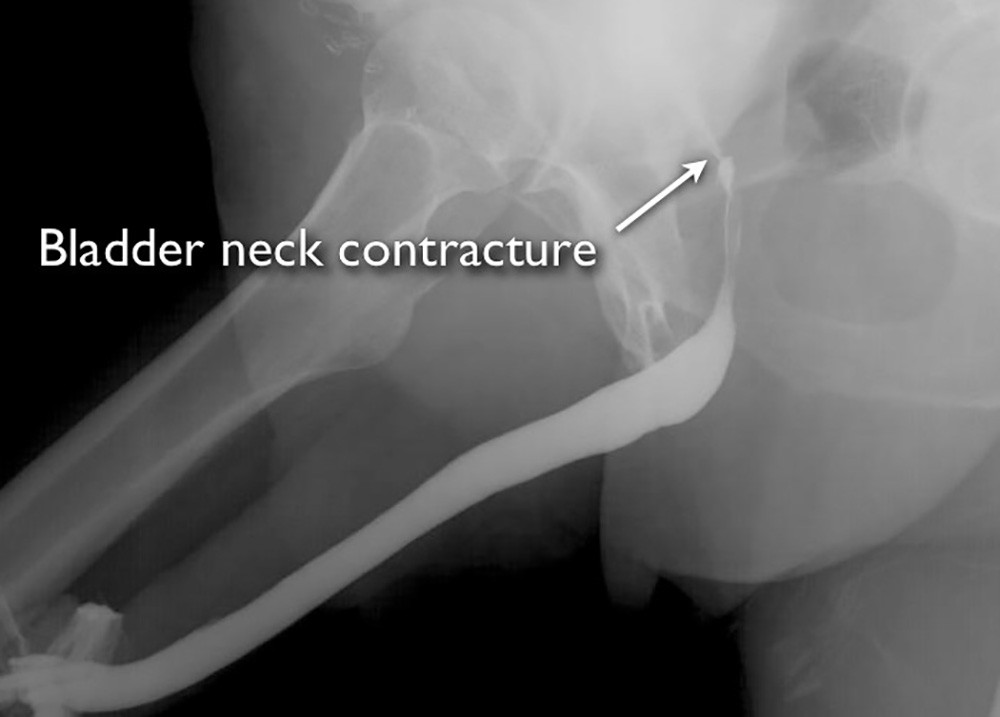
This is a retrograde urethrogram (RUG). During injection, the bladder neck is normally closed. In this case there is a pinched off area, but this is not conclusive. This study does confirm that the anterior urethra is normal.
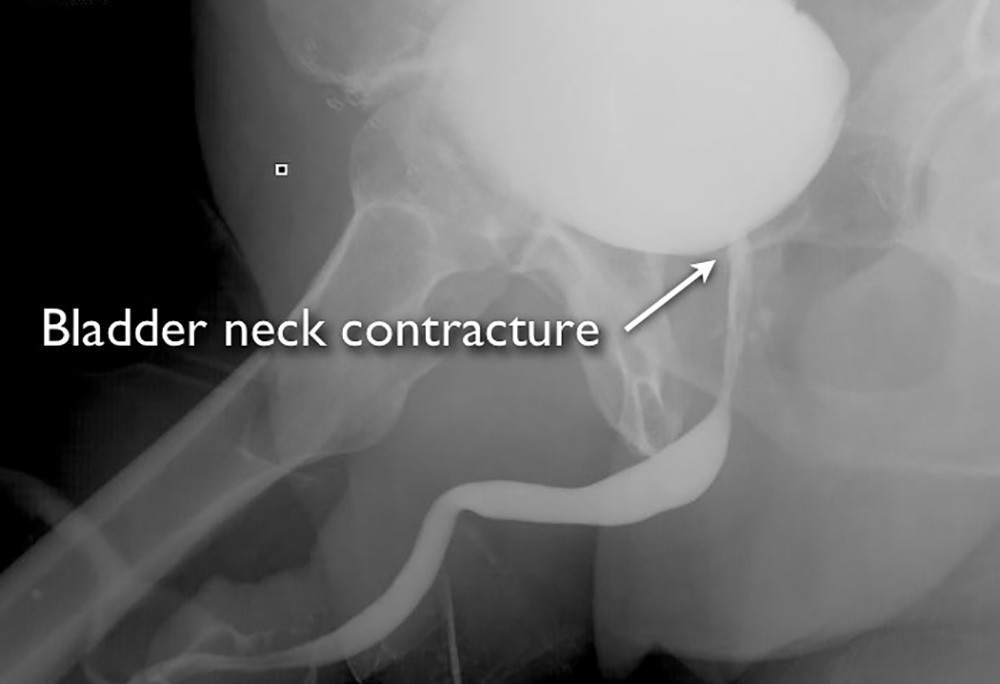
This is a voiding cystourethrogram. The bladder neck does not open. This patient has a bladder neck contracture. Since the bladder neck is narrow, there is not significant filling of the membranous urethra during voiding. Urethroscopy (cystoscopy) can assess this portion of the urethra. In this patient, urethroscopy and imaging confirmed a discrete bladder neck contracture after radiation.
Bladder neck contractures are generally initially managed with urethral dilation or an incision of the bladder, a type of internal urethotomy procedure called transurethral incision of a bladder neck contracture (TUIBN) This incision can be performed with a small knife that fits through the scope, or with a laser. If the contracture recurs, repeat incisions with the installation of Mitomycin, an agent that has been recently shown to possibly reduce the recurrence rate. In cases of recurrent contractures after radical prostatectomy, treatment options include open surgery to excise the narrow area and reconnect the urethra. This is possible but is a major undertaking and is not without risks.
After radical prostatectomy, a rare complication is a total obliteration of the bladder neck. A urethral catheter is always placed at the time of surgery, and when removed, patients develop severe obstruction. Often, a tube is placed directly in the bladder called a suprapubic tube.
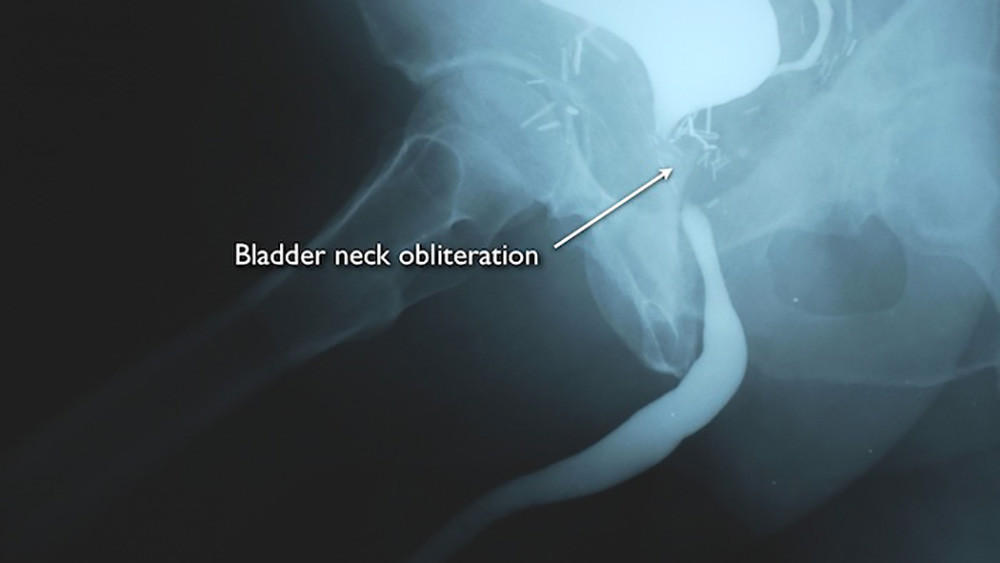
Bladder neck obliteration after radical prostatectomy.
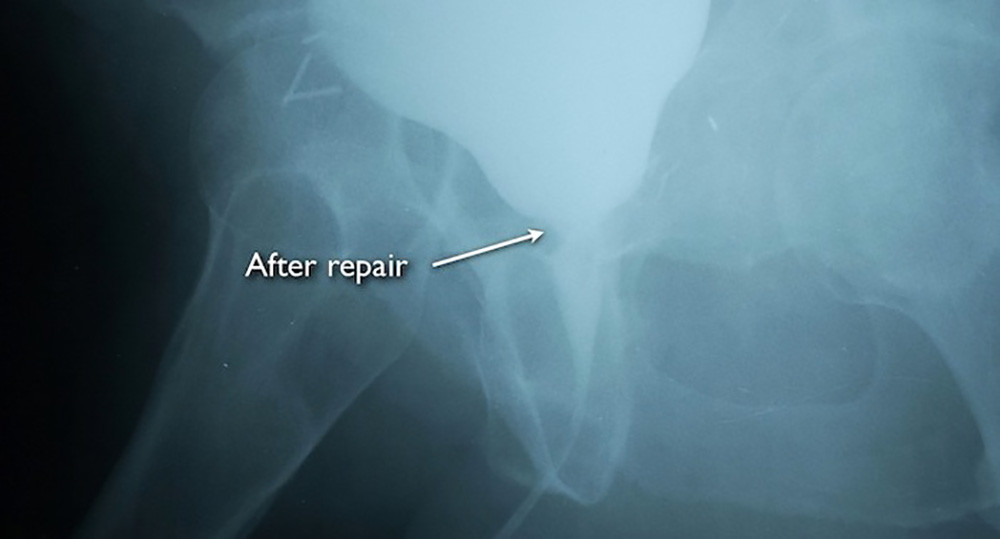
VCUG after open excision of the scar tissue and reanastomosis of the 2 healthy ends.
After radiation (external beam and/or radioactive seed placement), damage and blockage can involve the bladder neck alone also involve the prostatic urethral and/or external sphincter. Although doctors promoting high frequency focused ultrasound (HIFU) on the internet suggest that ultrasound waves pass “harmlessly” through tissues and target the cancer while “preserving surrounding tissues”, this is not always the outcome We have seen patients who have developed severe damage extending from the bladder to the bulbar urethra with a total obliteration of the bladder neck, prostate, and membranous urethra.
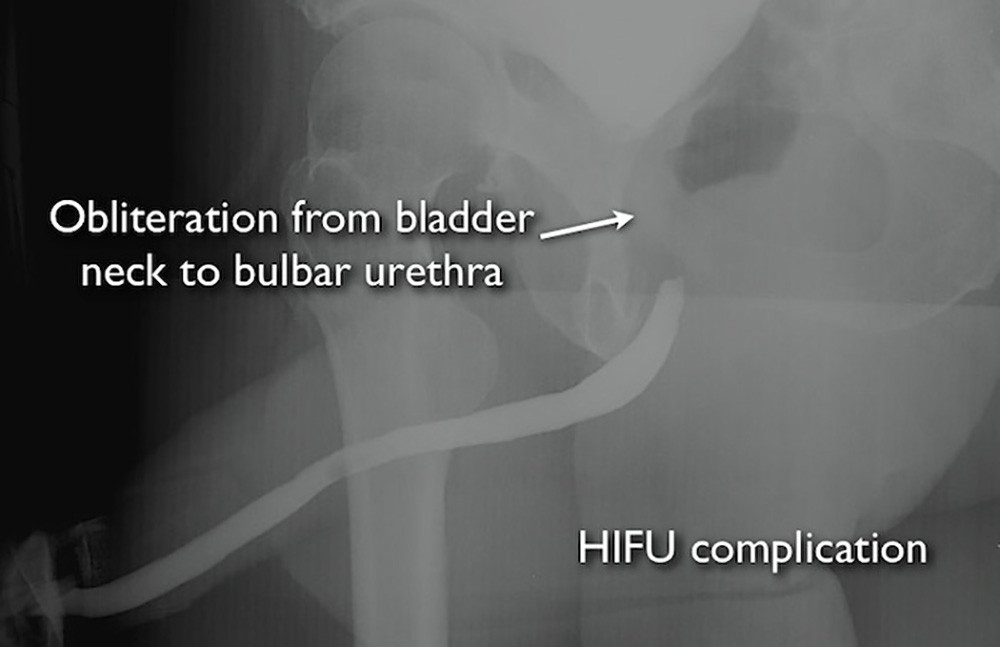
Total obliteration of the posterior urethra after high intensity focused ultrasound (HIFU).
The treatment of these devastating complications is individualized. Options include a permanent suprapubic tube, a formal urinary diversion (bringing the bladder to the skin of the abdomen using a segment of bowel), and major open surgery in an attempt to repair the damage, which may then lead to incontinence that requires treatment.

